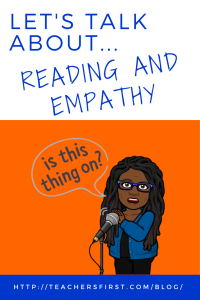May is when we officially celebrate the Get Caught Reading public service campaign. The idea of the campaign is to share the excitement of reading with others. The sponsoring organization provides posters, others create social media challenges, and libraries plan special events to encourage people to pick up a book.
There are many reasons why people choose to read, and we should take care to share these as well. Some people read to learn new things, and others read to stimulate their imagination. People can enjoy many benefits from reading books: book readers live longer, reading reduces your risk of dementia, and reading supports mental wellbeing.
Attending a conference earlier this year, at a session focused on using reading to encourage empathy in students, the presenters made a compelling case. First, reading a book about someone whose life is different from yours can help you understand their perspective on life. Then, having learned to develop empathy for book characters, students may be taught to transfer those skills to real-life human beings.
Empathy is “the ability to understand and share the feelings of another.” Dr. Jennie Warmouth explains that empathy is central to social and emotional learning (SEL) and is the precursor to compassion. Research tells us that empathy has been declining here in the U.S. for years, but fortunately, researchers also tell us that empathy can be taught. As educators, we can help our students learn this critical leadership skill with the books they choose to read.
Three ways to use books to develop empathy:
There are several ways to encourage the growth of empathy in your students. As a former literacy coach, I’d start with books every time.
- Encourage your students to read about famous empathetic leaders and study their character traits. People in this category would include Nelson Mandela, Mother Theresa, Eleanor Roosevelt, Beatrice Webb, and Mahatma Gandhi. Using a character map, character chart, or the identity iceberg will allow students to think critically about the leader in question and why they were so successful.
- Have students use a graphic organizer to compare themselves to a character in the book. Ask them to identify both similarities and differences. Focus on the similarities first, as that helps students build bridges with characters that have different backgrounds than they do.
- Use the cafe conversations strategy to have students play a character who lives differently than they do. Ask your students to role-play scenes from the book from multiple perspectives. Research has shown that this activity increases student empathy even if the character is an animal, plant, or inanimate object.
Do you have strategies for helping students develop empathy? Please share them below in the comments.


